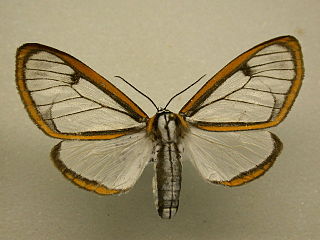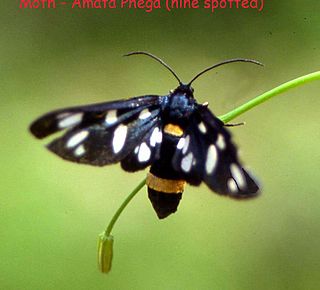
Poritiinae is a subfamily of butterflies, the larvae of which are unusual for feeding on algae and foliate lichen.

Hyalurga is a genus of tiger moths in the family Erebidae. The genus was erected by Jacob Hübner in 1819.

Sevenia, commonly called tree nymphs, is a genus of forest butterflies in the family Nymphalidae that, as larvae, feed on plants of the family Euphorbiaceae. There are fourteen species from continental Africa and two species from Madagascar. See Idea for the genus of Southeast Asian tree nymphs.

Charaxes ethalion, the satyr emperor or satyr charaxes, is a butterfly of the family Nymphalidae. It is found in southern Africa.
Ludia is a genus of moths in the family Saturniidae. It was first described by Hans Daniel Johan Wallengren in 1865.

The Syntomini are a tribe of moths in the family Erebidae. The tribe was erected by Gottlieb August Wilhelm Herrich-Schäffer in 1846.
Phyllalia alboradiata is a moth in the family Eupterotidae. It was described by Per Olof Christopher Aurivillius in 1911. It is found in South Africa.
Phyllalia ziczac is a moth in the family Eupterotidae. It was described by Strand in 1911. It is found in South Africa. Only one specimen has been recorded.




